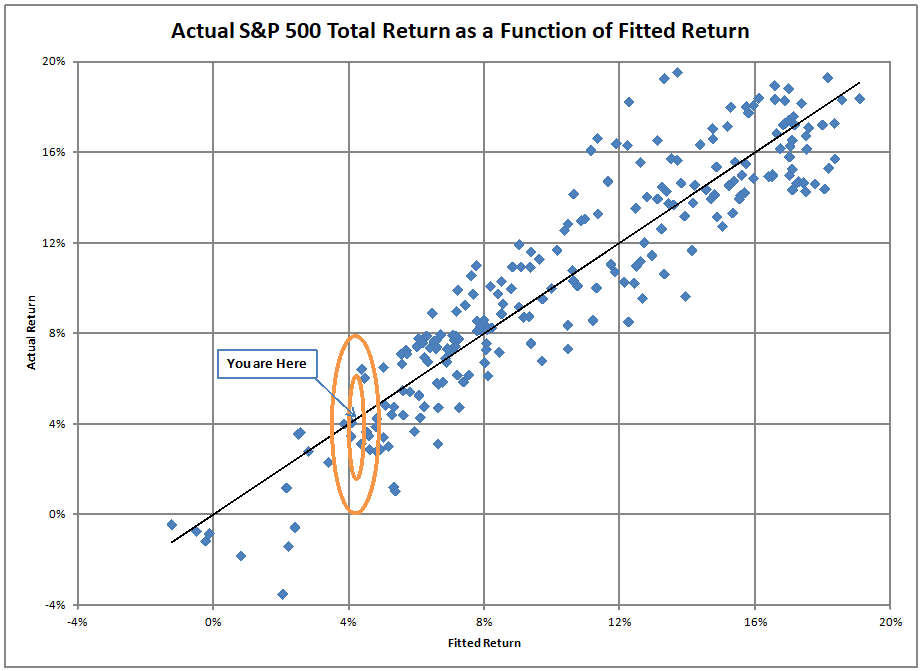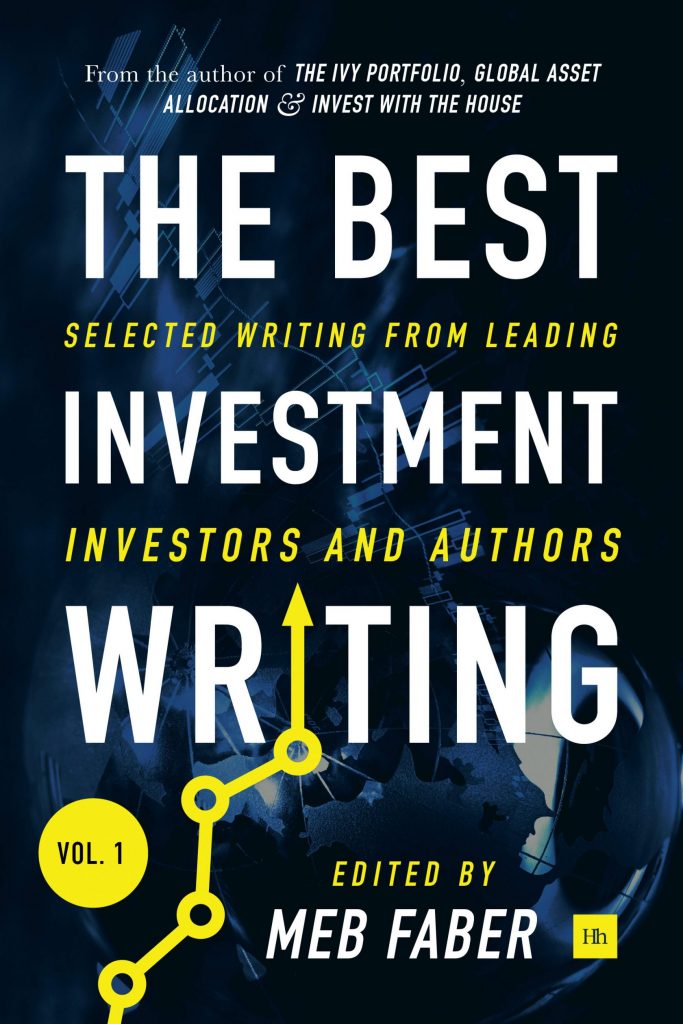Short-Term Rational, but Intermediate-Term Irrational

==================
This will be a short post.? At present the expected 10-year rate of total return on the S&P 500 is around 4.05%/year.? We’re at the 94th percentile now.? The ovals on the graph above are 68% and 95% confidence intervals on what the actual return might be.? Truly, they should be two vertical lines, but this makes it easier to see.? One standard deviation is roughly equal to two percent.
But, at the left hand side of the graph, things get decidedly non-normal.? After the model gets to 2.5% projected returns, presently around 3100 on the S&P 500, returns in the past have been messy.? Of course, those were the periods from 1998-2000 to 2008-2010.? But aside from one stray period starting in 1968, that is the only time we have gotten to valuations like this.
My last piece hinted at this, but I want to make this a little plainer.? For sound effects while reading this, you could get your children or grandchildren to murmur behind you “We know it can’t. We know it can’t.” while you consider whether the market can deliver total returns of 7%/year over the next 10 years.
There are few if any things that remain permanently valid insights of finance.? Anything, even good strategies, can be overdone.? Even stable companies can be overlevered, until they are no longer stable.
In this case, it is buying the dips, buying a value-weighted cross section of the market, and putting your asset allocation on autopilot.? Set it and forget it.? Add in companies always using spare capital to buy back shares, and maxing out debts to fit the liberal edge of your preferred rating profile.
These have been good ideas for the past, but are likely to bite in the future.? Value is undervalued, safety is undervalued, and the US is overvalued.? A happy quiet momentum has brought us here, and for the most part it has been calm, not wild.? Individually prudent actions that have paid off in the past are likely to prove imprudent within three years, particularly if the S&P 500 rises 10-15% more in the next year.
People have bought into the idea that market timing never matters.? I agree with the idea that it usually doesn’t matter, and that it is usually is a fool’s game to time the market.? That changes when the 10-year forward forecast of market returns gets low, say, around 3%/year.
Remember, the market goes down double-speed.? Just because the 10-year returns don’t lose much, doesn’t mean that there might not be better opportunities 3-5 years out, when the market might offer returns of 6%/year or higher.
Also, remember that my data set begins in 1945.? I wish I had the values for the 1920s, because I expect they would be even further to the left, off the current graph, and well below the bottom of it.
This isn’t the most nuts that things can be.? In fact, it is very peaceful and steady — the cumulative effect of many rational decisions based off of what would have worked best in the past, in the short-run.
As a result, I am looking 10 years into the future, and slowly scaling back my risks as a result.? If the market moves higher, that will pick up speed.





